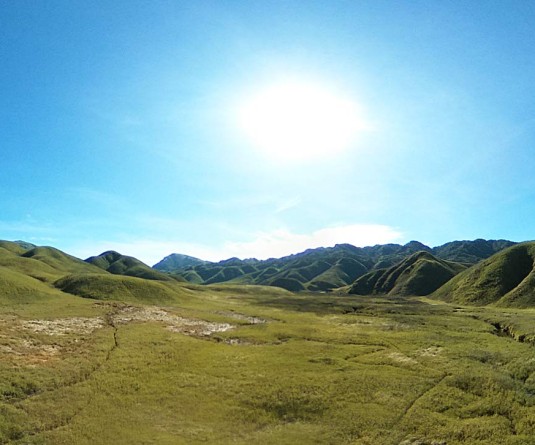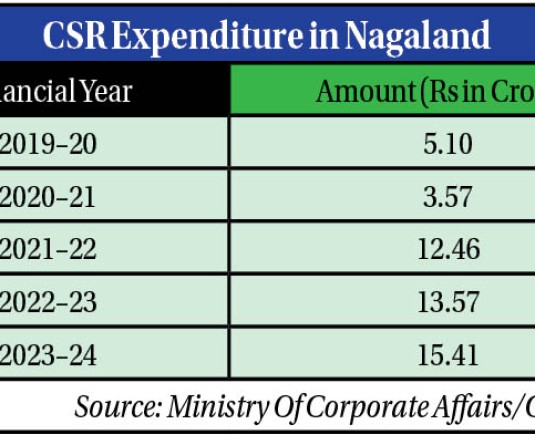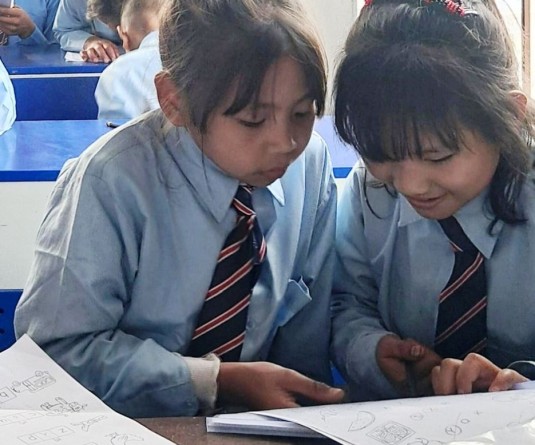Readymade daos forged at Wui village. (Morung Photo)
There was a time when daos & spears forged from Wui were highly valued possessions
Imti Longchar
Wui | February 24
There was a time when Wui village was famed far and wide for its distinct iron tool production.
Almost all the Khiamniungan villages, including those from the far-flung Myanmar would journey to Wui to have them forge a neu (dao) or a spear or an octje (axe). For the Wui villagers, with demand high for their prized iron smelting tools, this craft was once the primary source of livelihood.
With the passage of time, Wui, the only known village among the Khiamniungan Nagas that practice the craft of iron smelting, is under threat of losing its glorious past and craft. In fact, in the present day, not many will have heard about this village where traditional technology for iron smelting has been practiced for generations.
Located around 52 kilometers away from Noklak town, Wui has a household of 150 and is now a neglected village in the remote corner of Tuensang district bordering Myanmar.
The Wui indigenous art of iron smelting, a craft perfected by their ancestors, is slowly growing obsolete by the day and becoming economically unviable as signified by the young generations of the village as they leave the village gate for the urban areas in pursuit of better opportunities.
Tsothung, a village guard commander at Wui village reveals there are now only 20 people from the village who knows the traditional art of iron smelting. Most of them are young men who are still learning the craft. The last of the fading generation who possess the knowledge and skills of the craft are only a handful-five of them to be exact.
Unlike older times when daos, spears or axes were everyday tools and therefore always-in demand, the present day usages of these tools/weapons have been relegated to mere objects of display- to be hung in the drawing room or flaunted at festivals.
“It is not easy to sustain simply from forging daos and spears alone, times has changed,” says Thangmong, a 30-year old blacksmith, one of the young generations who chose to learn the craft from his father instead of exploring for opportunities outside like his peers.
And unlike his forefathers who used local mineral sources accessed from the village area, Thangmong has to procure engine parts of vehicles like Gypsy, Tata and Sumo to manufacture the iron tools.
Apart from the accounts that their forefathers accessed iron ores to forge the tools from a swamp area called ‘Malai Dai’ located just above the village, the present generation Wui villagers has no specific knowledge or details.
The young blacksmith supplies at the most 70 daos and other iron tools in a year, which fetches him around Rs 20-25, 000. Most of these orders come from Kiphire district where farming is still widely practiced and occasionally from handicrafts stores outside.
“The demand for our iron crafts is growing less by the day. It is not enough to sustain my family with the income I earn from this,” Thangmong reveals. It is for this reason that the young blacksmith says he took up farming.
The elders in the village are also aware that this indigenous art of iron smelting handed down to them by their ancestors may disappear if efforts are not made for its perseverance. With no assistance coming from the government agencies, there is little that the village can do to sustain from this traditional art.
“We have been holding discussions on how to preserve this legacy from vanishing. So we figured on the need to teach this art to the young generations so that it can find a new leash of life,” Tsothung informs.
“The commercial aspect is not imperative anymore. What is vital here is to teach the art to the youngsters so that it is not lost,” Tsothung says.






